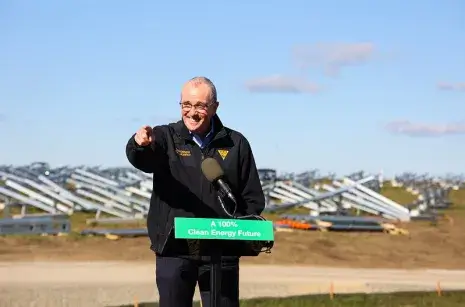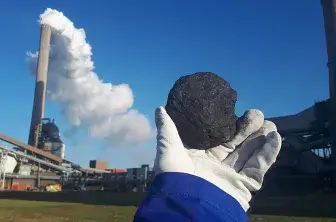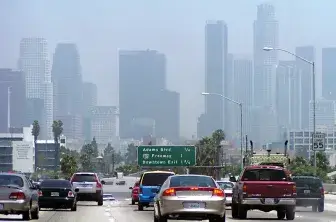Strategy 4: Deploy Strategic Mitigation
Reduce Emissions Through Trade

Without cooperation from all countries, the most polluting places will have economic advantages over those working to reduce their emissions. Trade is vital to decarbonization, so disengaging from the rest of the world is not an option. Countries must agree to a consistent set of rules on pricing carbon. The U.S. should cooperate internationally to ensure these rules benefit everyone.
More recommendations
Many emission-intensive products such as steel, automobiles, and agricultural products are traded globally. Approximately one-quarter of global emissions of CO2 and one-half of global emissions of methane result from the production of internationally traded goods.[i] Decarbonization will require developing low- or no-emission alternatives to producing these goods, but it will also depend on creating low-emission global supply chains.
With the proper rules, U.S. exporters can use clean technologies to gain strategic advantages in the global market. However, if the United States adopts strong emissions-control policies, exporters in countries with more relaxed regulations gain a competitive advantage, hurting U.S. industry and employment. Such investment losses occurred in Europe as its Emissions Trading Scheme grew stricter.[ii] Disengaging from the global economy is not a viable answer because low-emission industrial economies depend on global supply chains to access low-carbon technologies. These supply chains reflect both potential employment opportunities and economic vulnerability to monopolies.
Develop standard and accurate metrics for assessing the carbon footprints of industrial activities and phase-in a carbon-border-adjustment system.
One of the most significant barriers to strengthened cross-border cooperation is inconsistency in the carbon pricing of traded goods and services. Accurate estimates of a product’s carbon footprint are complex, particularly as the environmental cost may vary significantly based on the production technique.[iii] Currently, many U.S. industries have unique and opaque systems to determine carbon footprints that do not necessarily incorporate the environmental cost of raw materials, making comparisons difficult. However, developing goods that meet multiple standards can also be prohibitive for small producers.
Combatting carbon leakage, whereby the unilateral imposition of a carbon price in one area encourages production in less regulated areas, also requires international cooperation. Instead of a global carbon price, carbon border adjustment mechanisms (CBAMs) can reinforce individual carbon prices while decreasing overall emissions. Congress has drafted but not yet implemented legislation on this subject.[iv] Along with strong national emission control policies, the nation should adopt a border tariff mechanism. Congress should design that system to align with the World Trade Organization (WTO) standards, which allow for border adjustments applied for legitimate environmental purposes.
Strengthen U.S.-EU trade relations by identifying equivalent national policy mechanisms that foster open trading.
As the United States debates adopting a border measure, Europe has already enacted most of the elements of such a measure. In December 2022, the European Union passed regulations to introduce CBAMs in several sectors starting in October 2023.[v] Whether and how EU measures will recognize U.S. efforts to control emissions remains unclear because the European CBAM regime is designed around the European emission control strategy (which hinges on an EU-wide cap-and-trade system). At the same time, the U.S. policy is a more eclectic mix of subsidies and regulations and a few market-based mechanisms. Domestic subsidies created by the Inflation Reduction Act, including incentives for onshore production, have created tensions with Europe. The U.S. government should take the lead in outlining a productive trade relationship. Solutions should balance promoting open trading with key allies without hurting domestic production of green technology.
[i] Ankai Xu, Enxhi Tresa, Marc Bacchetta, et al., “Trade and Climate Change: The Carbon Content of International Trade,” Information Brief No. 4 (Geneva: World Trade Organization, 2021), https://www.wto.org/english/news_e/news21_e/clim_03nov21-4_e.pdf; and Chaopeng Hong, Hongyan Zhao, Yue Qin, et al., “Land-Use Emissions Embodied in International Trade,” Science 376 (6593) (2022): 597–603, https://doi.org/10.1126/science.abj1572.
[ii] Filip De Beule, Frederiek Schoubben, and Kristof Struyfs, “The Pollution Haven Effect and Investment Leakage: The Case of the EU-ETS,” Economics Letters 215 (2022), https://doi.org/10.1016/j.econlet.2022.110536.
[iii] Subramanian Senthilkannan Muthu, Assessment of Carbon Footprint in Different Industrial Sectors, Volume 1, ed. Subramanian Senthilkannan Muthu (Berlin: Springer Nature, 2014).
[iv] Chris Coons, “A Bill to Amend the Internal Revenue Code of 1986 to Establish a Border Carbon Adjustment for the Importation of Certain Goods,” 117th Congress, 1st session, 2021, https://www.coons.senate.gov/imo/media/doc/GAI21718.pdf.
[v] Jonathan L. Ramseur, Brandon J. Murrill, and Christopher A. Casey, “Border Carbon Adjustments: Background and Developments in the European Union,” R47167 (Washington, D.C.: Congressional Research Service, 2023), https://crsreports.congress.gov/product/pdf/R/R47167.




